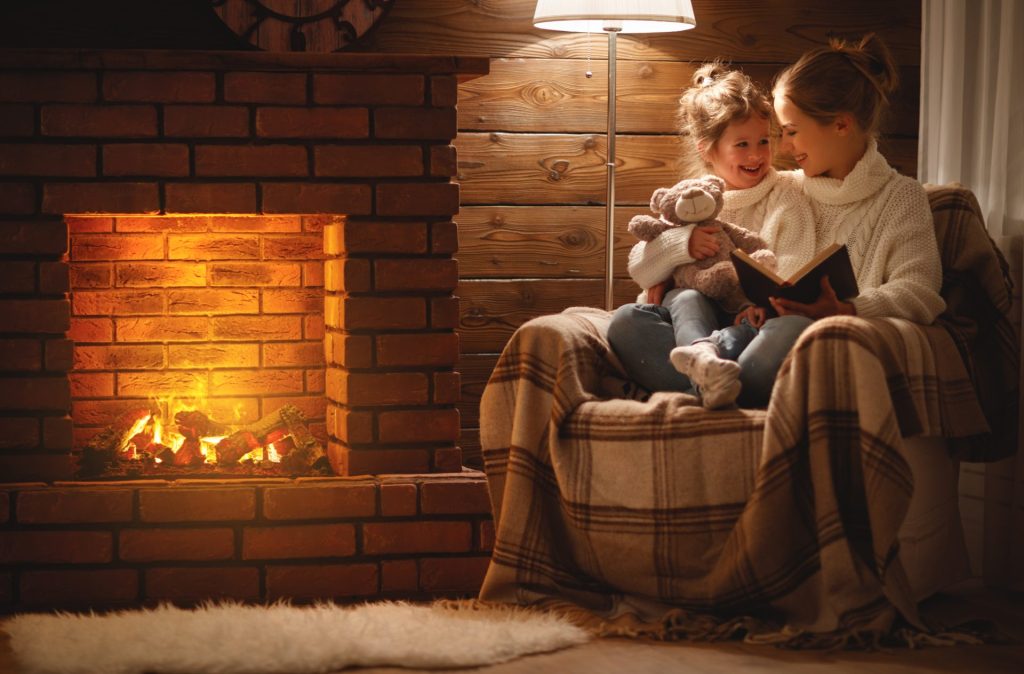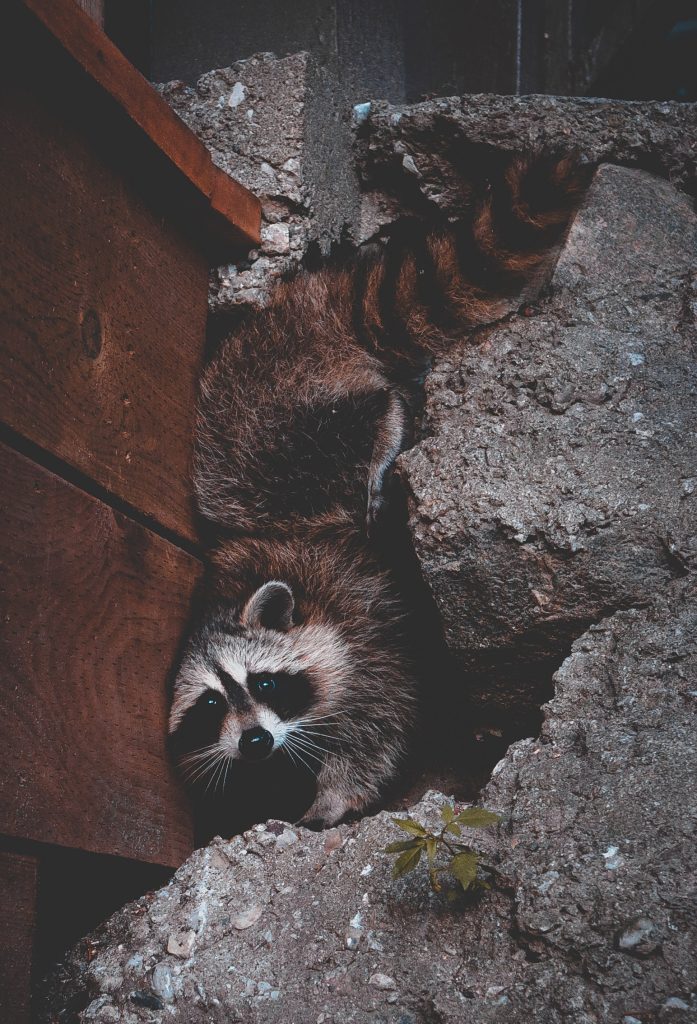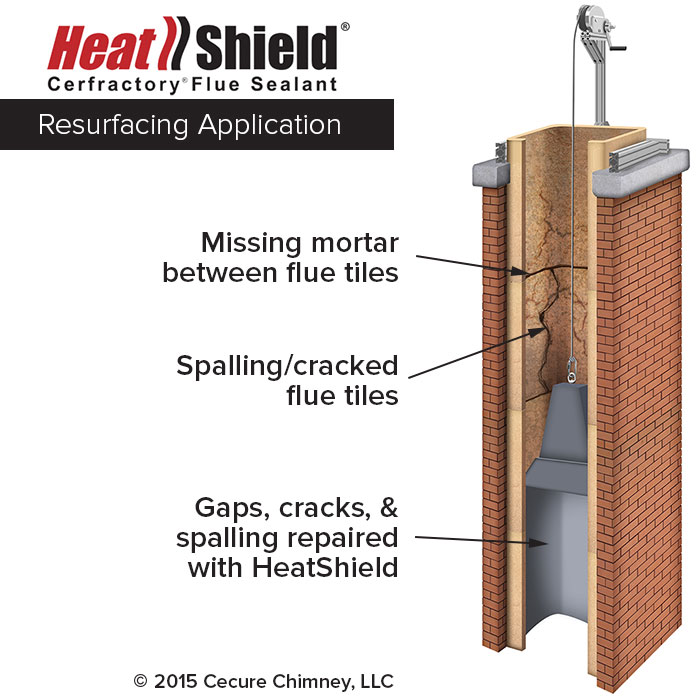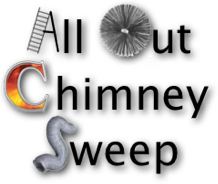Blog
Sweep Away Cancer during the month of October
All Out Chimney Sweep is always looking for new ways to help out the community. The month of October remains a particularly important time of the year as we are committed to doing our part in helping to raise breast cancer awareness.
Throughout all of breast cancer awareness month in October, our staff will wear pink shirts advertising a very noble cause. But our efforts will not stop with just wearing tee shirts. We are involved in Sweep Away Cancer, which is a breast cancer awareness movement in the chimney sweep industry. It began in 2015 and has continued to build momentum ever since.
As part of the Sweep Away Cancer movement, our staff will do our part in raising breast cancer awareness. Our chimney sweeps will even inform customers on how they can become involved or make a donation of their own. Our staff provides all the necessary information on how to help this worthwhile endeavor.
So don’t be surprised if a technician shows up on a service call to your home wearing a pink shirt that advertises Sweep Away Cancer. This will run throughout the month of October. A visit to our home office will also showcase staff members wearing our pink breast cancer awareness tee shirts.
Various industries have begun their own movements to help raise awareness for breast cancer. The chimney sweep industry joined that illustrious contingent and the results have been progressing each year. Sweep Away Cancer tee shirts, sweatshirts and license plate surrounds are all available for purchase on the Sweep Away Cancer website. There is also the option to make a flat donation to the cause. There is also a toll-free number to call as purchases and donations can be made by calling 1-800-897-8481.
All Out Chimney Sweep is a business, although our entire team values the importance of family. Breast cancer could strike any member of our families and we want to continue to be involved in helping the cause to eliminate this terrible disease. That is why we remember to be more than a business throughout the month of October. It is our goal to make our mothers, sisters, daughters and women all through the community proud to be associated with All Out Chimney Sweep.
The Sweep Away Cancer movement has banded together chimney sweeps from all over the country and we are part of a unique fraternity of businesses that truly cares about helping our community.

Proper Wood Choice, Storage, and Burning

Spending money on firewood can be a seasonal or year-round investment and, can be for recreation or needed for cooking and heating. The first thing to know is that it’s important to choose the proper wood especially when cooking over an open flame or burning in an indoor fireplace. After you purchase or self-harvest and chop up firewood, there is a recommended practice for storing and burning it. Here is some insight to help you get started with that process.
Wood Choices
Different types of wood serve different roles when they are burned. Most people select a type of hardwood as these varieties burn the longest and hottest, producing the most BTUs. Hardwoods include red or white oak, birch, hickory, dogwood, ash, pecan and hard maple. If you are in search of a crackling fire that sets a cozy ambiance, then a softwood is the right choice. Fir and pine are both softwoods that give off the aroma of a Christmas tree and are also simple to split. The crackles from that wood creates more sparks so it is a good idea to keep the glass door on your fireplace closed. When searching for a sweeter-smelling wood, look for the varieties of fruit trees. Cherry, pear and applewood give off pleasant scents when burning.
Storage
To get the most out of your firewood, there is a certain protocol to follow when storing your logs. Keep in mind that airflow is important when stacking. Placing all the wood on top of each other without any air flow will create moisture, which will dampen your logs and make them tougher to burn. There is a log-cabin method of stacking in which the direction of each row is altered. And if there is a way to store your wood under a covering, then go for it. A simple tarp will not have the same effect as it will be vulnerable to leaks. Also, make sure to ventilate the bottom of the stack of wood.
Burning
The process of burning wood inside your fireplace involves more than just lighting a match. It is important to know that treated wood should not be burned in the fireplace. Wood should be seasoned for about six months after it has been split. And when building a fire, use the top-down method, which places the logs on a grate in the back of the fireplace. Always use a fire screen and keep all furniture at least three feet beyond the fireplace. Burning a fire also means making sure tree branches are away from the top of the chimney. A safe distance is about 15 feet away.
Note: If you plan to cook by wood burning, whether a wood oven or smoker, additional research should be done to ensure safety and proper wood selection.
Why to choose a CSIA certified chimney sweep?
When it comes to hiring anyone to service any part of your home, it is important to find a company who truly knows what it is doing. That holds true when hiring a chimney sweep service. Some chimney sweeps may offer discounted rates, but price is not the only thing homeowners should consider. There are plenty of reasons why it is advantageous to choose a Chimney Safety Institute of America (CSIA) certified chimney sweep.

First, it is important to understand the function of the CSIA. The Chimney Safety Institute of America has been in existence for more than three decades and offers certifications for chimney sweeps. To earn this certification, a chimney sweep must attend a review session and pass a certification exam.
Selecting a CSIA certified chimney sweep service allows homeowners to have quality trained technicians working on their chimneys. Here is what comes with hiring a CSIA chimney sweep:
Higher standards
Those who earn a CSIA certification are not only well-versed, but they are also obligated to adhere to the standards set forth by a CSIA certification. These standards include the following:
• Recommended practices for safety venting
• Building code compliance and manufacturer instructions
• Offering expert insight to customers
• Performing duties in a respectful and professional manner
CSIA certified chimney sweeps are given a patch upon passing their certification requirements. This will show customers proof that a technician is certified. If they require further proof, there are documents available for presentation.
Superior knowledge
CSIA certified chimney sweeps have attained a higher level of industry knowledge. This is something that is tested during the exam. Chimney sweeps are required to achieve a higher level of proficiency in a number of areas, which includes the following:
• Most optimal practices and chimney technicalities
• Physics of wood burning and creosote formation
• Building codes that are applicable
• Established requirements set by the EPA
The CSIA offers a host of recommendations to homeowners looking to hire a chimney sweep service. And when hiring a CSIA certified chimney sweep company, customers can ask for references and to see proof of insurance. CSIA certified chimney sweeps have no reason to conceal any documentation or credentials as this is an esteemed distinction bestowed upon the best in the business. Hiring a CSIA certified chimney sweep will make sure you and your family are safe when it comes to having a properly-functioning chimney. It will also assure you that each part of the job is done with skill, proficiency and above-average knowledge of the trade.
Why should you have your chimney swept?
Chimney sweeping is not a spring cleaning task that many people can handle. It is best handled by a professional and there are plenty of reasons this should be a regular practice for homeowners. Here is a look at some reasons why you should have your chimney swept.

Safety
The top reason to sweep your chimney is to prevent a fire. The No.1 cause of chimney fires is a dirty or clogged chimney. Using a chimney will cause a buildup of creosote which is produced by burning wood. This becomes combustible and can easily start a fire. Sweeping your chimney will remove this substance and also free up the air supply. It is also important to remove the buildup of carbon monoxide in your chimney before it can lead to carbon monoxide poisoning. In its milder forms, carbon monoxide poisoning can result in dizziness, headaches and nausea. When the buildup is more severe, carbon monoxide poisoning can be fatal.
Cleanliness
A chimney that is not swept will start to develop a distinct odor. Eventually, a fireplace will start to have small leakage from rain and snow. When this is combined with ash, this can make for an unpleasant odor and a sticky substance. A chimney sweep will remove any remnants of that substance and identify any signs of leakage.
Pest vacancies
Your chimney was not intended to be a home for small animals, like birds and squirrels. And if one of these animals dies in your chimney, it will leave a very unpleasant smell. Some animals have trouble getting out of your chimney once they find their way in. The animals may also cause problems with the smoke and air escaping out of your chimney. That blockage could lead to a variety of problems and sweeping those problems away is highly recommended.
Smoke damage
Smoke is a byproduct of burning a fire and the residue from smoke builds over the course of time. Soot begins to form and starts to collect around the flue. What happens is the flue starts to have problems pulling the smoke upward and it begins funneling out into your home. This will leave the inside of your home susceptible to smoke damage. That could mean damage to your carpet, furniture and nearby walls.
Ease your mind
When you have your chimney swept regularly, it will remove a whole lot of worry. Make sure your home and everyone in it is safe with regular chimney sweeps offered by All Out Chimney Sweep in Charlotte, N.C.
Animals and the Chimney
One of the most common concerns for homeowners who have a chimney is the constant threat of animals. Chimneys can become a nesting place for all sorts of animals and that can create all sorts of problems for homeowners. Here is a guide of what animals to look out for and what to do when they infiltrate your chimney.
Birds
While a chimney might seem like an opportune place for birds to build a nest, chimney swifts most commonly take up residence inside chimneys. A chimney swift is a small bird that is naturally drawn do dismal, enclosed places, very much like a chimney. These birds emit a loud chirping sound and that will be the first warning sign that these pests have shacked up in your chimney.
But chimney swifts are a threatened species so there are necessary steps to take for their removal. Contact your local EPA office or Wildlife and Fish location and they will take necessary action for the birds’ safe removal. Other birds may also build a nest inside your chimney and most will be less inclined to return when the nest is removed. Hiring a professional chimney sweep can help to ensure there is no blockage or any remnants of a nest that could be dangerous.

Animals
Animals are drawn to chimneys because they provide some warmth and protection from the elements. There are a number of animals that may find their way into your chimney. Squirrels and bats are too common inhabitants, along with raccoons. When raccoons make their way into a chimney, conditions can become particularly hazardous. Raccoons carry ticks and fleas which can transmit diseases. It is also not unheard of for raccoons to climb far down the chimney and into the fireplace. This could potentially open up the possibility of them finding their way into your home. But even if they do not get that far, their odor can linger down and leave an unpleasant smell.
Fixing the problem
There is a sure-fire way to keep all of these animals out of your chimney. This requires fitting your chimney with a chimney cap. This entails closing off the top of your chimney. There is also netting available for additional protection as it acts as an additional barrier. Don’t wait until animals take 8up residence in your chimney to address the issue. Capping your chimney is a fast and affordable service that can take away the work of having animals in your chimney.
Common Types of Chimney Designs
Chimneys are a wonderful asset to any home. Not only do they function as a good vent for residue smoke and fumes to make sure that you enjoy all the benefits of the warmth, they also add a better level of authenticity to practically any home design. What chimneys look like tend to vary from house to house, not only on the basis of their purpose but also on the design aesthetic of a house. This is why builders often place a great emphasis to make an informed choice when it comes to chimneys to make sure that the construction works in terms of both functionality and style.
While chimneys in general are vertical and climb over the house, they exist in various varieties and styles. Here are the most common types of chimney designs available:
Quoins: Made out of stone, these chimneys are characterized by an exterior made of “quoins,” i.e. dressed stones that march up the corners. Generally, set to have the stone faces alternate in a wide-and-narrow fashion, these chimneys tend to be a favorite among those who have (or build) stone buildings, or enjoy an old and rustic aesthetic.
Clay Pots: As the name suggests, such chimneys are characterized by the presence of three clay flue pots on the roof. Serving both style and functionality to an equal degree, these pots are often placed on old chimneys when the latter have aged past their ability to function. Placing them in such a way increases the original chimney’s height, which ends up making the opening narrower and prevents smoke from leaking into the house.
Paired Chimneys: These chimneys have their origins in the old Georgian-style construction but are also popular in the modern times among those who prefer an aesthetic that looks and feels antique. Also called double interior chimneys, these have an added advantage of being able to help spread heat and warmth evenly throughout the house. These chimneys are generally located in the center of the house, where they absorb maximum warmth and radiate them throughout the house, keeping the whole place warm and cozy, especially during the cold winter months.
Metal Chimney: While the sound of a metal chimney may not sound very appealing, they tend to score very high on the functionality scale, and with some careful planning can make for a decent design addition as well. These chimneys are known for having double (or even tripled) walls – with strong insulation (and in case of tripled walls, air) between the layers. Such as design helps trap the heat from escaping into the outdoors and keep all the heat inside. For design purposes, metal chimneys are attached with sided frames, masonry or wooden panels.
Brick-and-Mortar: One of the most popular and classic chimney designs, these chimneys both work great and look fabulous. Fitting a wide range of design aesthetics, these chimneys are known for a simple construction made with the help of brick and mortar. As a general rule, the mortar used for constructing these tend to be softer than the brick. This is to make repairs convenient – for instance, if the chimney gives way, it can be easily fixed by adding mortar to the bricks, as opposed to replacing the bricks, which is a tougher both in terms of time and labor.
Play-of-Angles: Ideal for roofs that sport a range of attractive angles, these roofs are placed at an angle at the base and are capped with multiple rows of corbelling. At times, alternating colors are also added to highlight the angled theme of the construction. Though not suitable for every roof, such chimneys are a very complimentary addition to angled roofs, as they tend to balance out the aesthetic.
Prefab: Ideal for those who prefer modern style and functionality, these chimneys have been around since the 1980s and are known to use in place of masonry chimneys. As the name suggests, these chimneys come fitted with a prefab fireplace system, and when installed and maintained properly, work seamlessly for years altogether. When it comes to design, they may not offer much in terms of décor, but are subtle yet suitable in almost every type of design aesthetic.
A Chitter Chatter in your Chimney: Chimney Swifts
Chimney swifts are small birds who got their name because of their inclination to nest in chimneys. They have also been known to nest in hollow trees and specially crafted nesting towers. It is common for homeowners to find a family of chimney swifts taking up shelter inside their chimney when accessible. Although birds themselves may not be seen at first, their chittering will likely be heard. Fortunately, chimney swifts do not pose a serious or permanent problem. That is not to say nothing needs to be done about it.

Contrary to popular belief, these little birds can be quite beneficial to have around a home. They aid the environment by feeding on flying insects that can be a particular nuisance to people and livestock. However, the chimney swift population has been rapidly dwindling, which has granted them protection under the Migratory Bird Treaty Act. This makes it illegal to deliberately disturb their nest while eggs and/or offspring are still occupying it.
The summertime is the breeding season for chimney swifts as they begin to migrate back up to North America during the month of March. This is also when you may find that a family of chimney swifts has moved in to your chimney. Once a nest is established for the breeding season, then it is simply a matter of waiting since by law the nest cannot be removed. Nesting and incubation can take approximately 30-40 days. It can be another 32 days before the offspring fully leave the safety of the nest. In the meantime, don’t worry because the nest is too small to be considered a fire risk. You will want to close off your fireplace to prevent the birds from inadvertently entering your home.
Come fall, after all the offspring are raised up and have left the nest, a professional can safely remove the nest(s), complete a thorough chimney inspection and complete any repairs. It is also a good idea to have a cap installed on the chimney so that no nesting occurs in the future. The chimney should be thoroughly cleaned by a professional before it is capped. It is also worth mentioning that many modern fireplaces and chimneys are designed to be inaccessible to these birds and other animals.

Capping a traditional brick chimney will eliminate the issue of chimney swifts nesting within a home. It is a solution that will prove safer for the birds as well. But, where will the birds nest now that your chimney is capped and favorable natural nesting sites are few and far between? Chimney swift nesting towers are a great way to help support the chimney swift population in your area. By placing the nesting structures in backyards and parks these areas will likely see a reduction in the amount of insects making outdoor activity more enjoyable throughout the summer.
Remember, one of the first signs of chimney swifts is a subtle chirping from your chimney. It may take a little while to realize that chirping is not coming from the outside of your home. When that occurs, do not be alarmed as these birds will not bring you any harm. A chimney sweep can be called to inspect the chimney and confirm your suspicions.
The reality of chimney swifts shacking up in your chimney is a reminder of how preventative measures can keep a chimney and fireplace operating efficiently all year round. It addition to this convenience, being proactive with prevention can be a lifesaver for a variety of animals that could otherwise inadvertently find their way into your chimney, become trapped, and parish. For this and other reasons, chimney sweeping Charlotte NC should be done annually.
We hope you have enjoyed reading about Chimney Swifts and return to our blog soon.
Chimney Repair With Heatshield Cerfractory Flue Sealant

HeatShield has become a popular and reputable name in the chimney service industry. Heatshield Cerfractory Flue Sealant is another popular product used in an important type of treatment. Here is a closer look at how it works.
A regular chimney sweep may reveal cracked chimney tiles. One of the fixes to this issue is the use of Heatshield Cerfractory Flue Sealant. This product is a specialized formula that aims to reshape the integrity of a chimney. This is done by fixing issues in the chimney flue, which will also help to prevent dangerous gasses from seeping into your home. The sealant can also address the following problems:
Cracking – Cracks in the flue tiles may cause a chimney fire. This can be brought on by a natural occurrence, such as a lightning strike. It can also be a result of a home settling over the course of time or by faulty workmanship.
Gaps – There is an obvious concern anytime there are gaps in a chimney. These are basically caused by the erosion of mortar, which is expected with time.
Spalling – This is also referred to as flaking. It is a result of the moisture that forms after the continued combustion of wood. And continued spalling can prove to be a health risk.
A chimney flue liner is intended to protect people from any hazardous gasses that may filter into a home. That is why it is important to have a flue that is solid and impenetrable. Heatshield Cerfractory Flue Sealant keeps soot and creosote from escaping through any openings and is a treatment service offered by professional chimney sweeps.
The Heatshield Cerfractory Flue Sealant was created more than 20 years ago and continues to be an affordable solution for homeowners experiencing problems with their flue. The product is also eco-friendly as it is composed of natural and recycled materials. The sealant is capable of sustaining temperatures that surpass 2900° F. It has also passed codes set by the National Fire Prevention Association (NFPA).
The application of Heatshield Cerfractory Flue Sealant is done by trained professionals who have experience in resurfacing the interior of a chimney. A tie coat is applied before the HeatShield Cerfractory Flue Sealant and acts as a primer. There is a precise way this treatment is done as HeatShield is more than just a product, but a way of addressing issues with your chimney flue.
To get chimney repairs started right away, call the experts at All Out Chimney Sweep. Their highly trained staff will inspect your chimney and make any necessary repairs to ensure the safety of your household.
Options Exist When Looking to Add a Chimney Liner
Every chimney is specific in its design and that includes an integral safety feature. Fireplace chimney liners cover the interior of a chimney flue and act as a protective barrier. Chimney liners are sometimes built as part of an original chimney, but they can also be installed at any given time. Mostly all chimneys built in the present day are required to be fitted with a liner. However, that was not always the case as there are a lot of older homes that have chimneys without liners.
It is important to have a chimney liner to protect you and your family. Chimneys sustain a lot of wear and tear and there are many dangers involved when a chimney is neglected. Here are some signs to look for that will tell you it is time for a new chimney liner in your home:
- Any signs of noticeable rust in the chimney
- Flue tiles that are cracked
- Cracking located in the crown of the chimney
- Damage or cracking to the exterior bricks or mortar
- Water damage in the home
 Installing a new chimney liner comes with a variety of options. It is recommended that homeowners contact a professional and CSIA certified chimney sweep. However, it is also important to know that you have options when it comes to selecting a chimney liner. There are varieties that can meet different budgets and tastes. Here is a look at some of those options:
Installing a new chimney liner comes with a variety of options. It is recommended that homeowners contact a professional and CSIA certified chimney sweep. However, it is also important to know that you have options when it comes to selecting a chimney liner. There are varieties that can meet different budgets and tastes. Here is a look at some of those options:
Clay tile
This variety is a conventional choice and remains one of the cheapest. The benefit of choosing clay tile liners is their longevity. With proper care, these liners can last up to a half century. Installation comes with a bit of difficulty, although there is no getting around clay tiles ability to withstand cracks, erosion or leaks.
Cast-in-Place
This option refers to a cement chimney liner. It has about the same life duration as a clay tile liner and can ensure any prior seals and cracks are patched up. The use of cast-in-place liners will also provide stabilization for older tiles that may be starting to deteriorate with age.
Metal liner
Metal is the most expensive of these three selections. However, it typically carries a lifetime guarantee, But this selection does not bring in the worry of cracking, leaking or erosion. Many homeowners who opt for a metal liner rarely worry about issues with their chimney flue.
